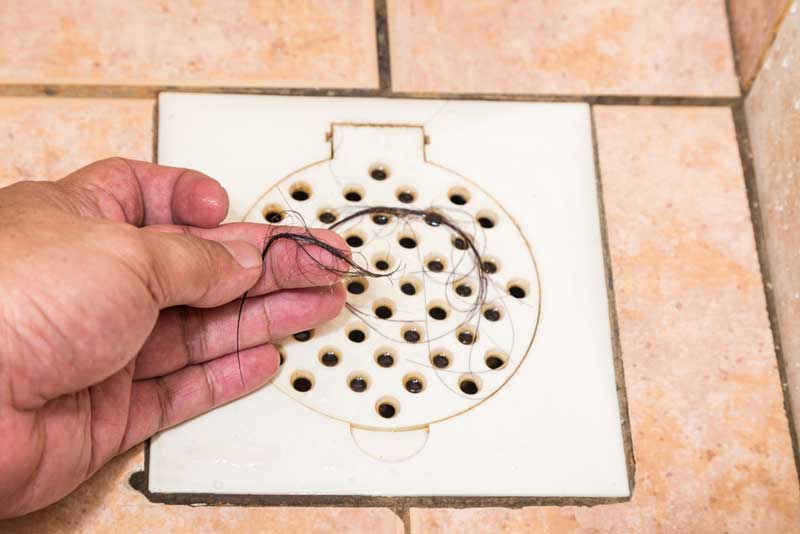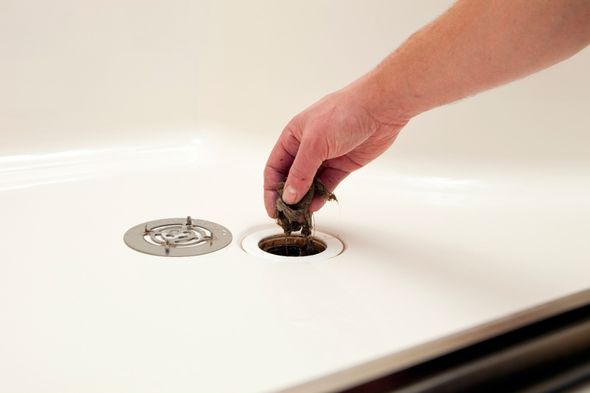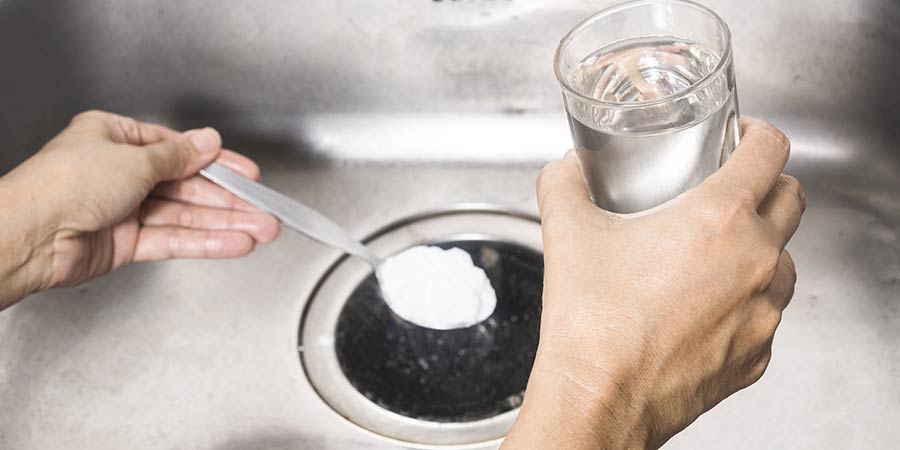What Causes Smelly Drains
No matter how clean your bathroom is, once in a while, you’ll experience the smell of a smelly drain. And unfortunately, it’s not always easy to figure out precisely what’s causing the odor. Even more challenging is knowing how to get rid of smelly drains in bathroom and how to get rid of bathroom sink smell.
The good news is that troubleshooting the exact problem can be easy if you factor in a few aspects. First, you need to determine the material your drain is made from. Pipes made from PVC are typically more prone to developing odors than those made from cast iron or copper. This is because PVC pipes don’t have any coating on them, so the particles or residue stuck there will eventually start rotting away and releasing foul-smelling gasses into your home.
In addition to the type of material used for the pipe, there are other things that can also contribute to smelly drains. For instance, if a clog develops in one part of your plumbing system, there’s a good chance it could be causing problems in other areas, too — especially if it’s affecting water pressure or flow rate significantly enough for you to notice it.
Here is a more detailed look at the common culprits that cause shower drain smells and how to stop drains smelling;
1. Food and Grease Build-up
Food and grease can accumulate in your pipes, leading to foul smells, clogs, and other issues. This happens when the grease and food particles stick on the sides, forming gunk that gives off a rotten-egg smell.
2. Clogged or Missing Vent Pipes
Drain pipes have a network of vent pipes to bring in the fresh air and let out awful smells. The entire system is called the drain waste vent, and the vent pipes lead to your house’s rooftop. If the vent pipes become clogged or are missing, the foul smell cannot escape, so it remains in your house.

3. A Dry P-Trap
The p-tap is a goose-neck-shaped drain pipe connected to the sink, shower, or laundry tub that prevents sewer gasses from entering your home. This trap is usually made of plastic or ceramic and has a small hole at the bottom where water flows through. It also has a larger opening on top.
The larger opening allows air to enter the drain so that if any liquid gets stuck in the trap, it can evaporate away. However, if there isn’t enough water in the trap, it can dry out and allow sewer gasses to come into your home through this opening. In most cases, it becomes dry if it is not used for long.
4. Bacteria

Bacteria are one of the leading causes of smelly drains and septic tanks. Its activity is caused by the presence of organic materials such as food scraps, grease, and hair.
The bacteria feed on these materials and release foul-smelling chemicals that cause drain blockages. It can also cause problems by clogging pipes, resulting in flooding or other damage to your home.
5. Drain Trap
A drain trap is the most common cause of smelly drains. It is a small U-shaped pipe that connects the drain to the sewer or septic tank and keeps sewer gasses from entering your home.
When water flows down your drain, it fills up this U-shaped pipe and creates an air pocket inside the trap. This air pocket then prevents sewer gasses from escaping into your home through the drain line when you use a sink, shower, or toilet. However, when no water flows through these pipes, there will be no air pocket inside your trap, meaning sewer gasses can escape through these pipes into your home.
6. Dirty Pipes and Drains
If your pipes and drains are dirty, they can easily become smelly. This happens because there is no place for the dirt and grime to go after the water has passed through them. The result is that they get stuck inside the pipes and drains and start smelling over time.
7. The Sump Pump
The sump pump is usually located in the basement or crawl space and is used to help keep water out of your house during heavy rains or snowstorms. If this pump stops working, it will allow water back into your home, which might be smelly.
The sump pump can also cause bad smells when there is too much sewage in your drain pipes. This can happen if someone flushes something other than toilet paper down their toilet or if they pour grease down the kitchen sink while cooking at home.
How to Clean Smelly Drains

Smelly drains can be uncomfortable, but you can easily get rid of the odor. Here are several ways how to clean smelly drains or how to clean shower drain;
- Pour hot water into the drain to loosen and wash away any scum or debris attached to the side.
- Add half a cup of coarse salt. This helps in brushing off the debris on the side.
- Sprinkle half a cup of baking soda on the drain. Most of it will stick on the side, and this is just perfect.
- Pour vinegar or lemon juice. This will react with the soda ash, thus helping remove any debris.
- Let the reaction work for at least 10 minutes. This ensures maximum reaction and removal of scum.
- Flush with another bout of hot water. If the smell is still there, repeat until it is gone.
How to Prevent Smells in Bathroom
Bathrooms are one of the most important rooms in the house. Unfortunately, they are prone to nasty odors that many individuals struggle to eliminate, especially if their bathroom drain smells like sewage.
If you are looking at how to clean shower drain or how to stop drains smelling, here are some tips;
1. Keep Your Bathroom Clean at All Times as a Home Remedy for Smelly Drains
This means washing the floor, walls, and toilet regularly with antibacterial soap or cleaner. You can also use disinfectants such as bleach or vinegar to kill germs and remove stains from walls and floors.
You should also practice cleaning the drain regularly with vinegar, soda ash, and lemon juice to keep it smelling fresh. Don’t forget to clean the inside and outside of your toilet bowl and any other parts of your bathroom visible to visitors.
If possible, avoid leaving dirty clothes lying around for long periods before washing them or throwing them away. This will help to reduce the risk of mold forming on these items and causing an odor problem later on.
2. Good Ventilation
Good ventilation is one of the most important things for preventing smells in the bathroom. It helps remove excess moisture from the room, preventing mildew from forming on surfaces such as wallpaper and grout. Ventilation can also help prevent mold from growing on surfaces like clothes or towels left to dry inside the bathroom.
You can do this by opening a window and using an exhaust fan.
3. Use an Air Freshener to Mask a Smelly Shower Drain
If you’re looking for a quick and easy solution on how to get rid of bathroom sink smell, it’s best to use air fresheners. They are an excellent way to remove unwanted smells from your home without spending hours cleaning or scrubbing down the surface where the odor is coming from.
4. Use Baking Soda If Your Bathroom Drain Smells Like Sewage
Baking soda is an effective home remedy for smelly drains. During regular drain cleaning, use it to remove soap scums in the drain.
You can also use it in your toilet bowl by mixing two tablespoons of baking soda with two cups of water and pouring it into the bowl before flushing it out with more water after 30 minutes. This method will not eliminate hard water stains but will help eliminate a smelly shower drain if you follow these steps regularly.
5. Use Scented Candles
Use scented candles or potpourri in your bathroom to mask unpleasant odors from other people’s perfumes or sweat. They can also mask shower drain smells that you probably have not identified their cause, or if you’re struggling with cleaning smelly drains with bleach with no tangible results.
Is Your Bathroom Drain Smelly?
One of the few times you can relax is when taking a bath. A good shower experience is also a form of meditation since it’s one of the few places where you can take a mental escape.
Unfortunately, a smelly drain in the bathroom turns it into a place you dread and forces you to shower in a rush. That’s why it is essential you know how to get rid of smelly drains in bathroom. Luckily, the tips in this article will help you do exactly that.
Frequently Asked Questions about Cleaning Smelly Drains
Baking soda and vinegar cannot damage your drain pipes. In fact, they are the most effective home remedies for smelly pipes as they react with scum and other debris to keep the lines clear and smelling nice.
There is no harm in cleaning smelly drains with bleach. Simply fill the sink with hot water, add the bleach, and let it drain.
Cleaning your drain frequently is recommended as one of the best ways how to get rid of smelly drains in bathroom. However, it is recommended to do it weekly to keep the bathroom drain smells off completely.
0 Comments for “How to Get Rid of Smelly Drains in Bathroom”